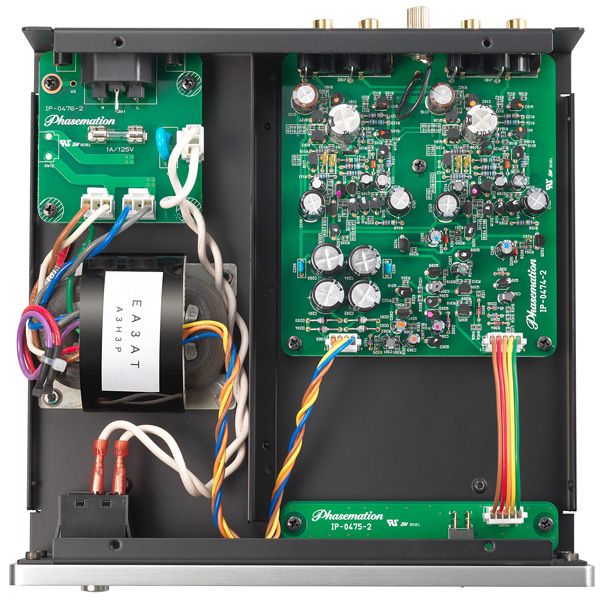Only one in the class, a non-feedback type amplifying circuit due to all discrete parts
The load feedback amplifier which holds the popularity of present amplifiers always compares the input and output signals and this difference (supplement signal) is amplified as an input signal which makes it possible for a high quality of amplification at a low cost.
In regards to this, non-feedback amps amplify the input signal itself, which makes a big difference.
However for a non-feedback amplifier, it does not have a supplemental operation as like the load feedback amplifier and therefore there is a rise in costs due to structural parts and requests of high accuracy on the operation settings. However, in terms of sound quality, it is excellent in music impression, dynamics, and shading expressions and it is an amplifying type having strong support of music and audio funs and all Phasemation amplifiers adopt this non-feedback amplifying circuit.
For this equipment, the circuit structure composing of discrete parts is adopted, which might be only one in this class; by doing this, the well-selected discrete active elements for the non-feedback amplifier can ideally operate.
As a result, "rich gradational expression of sound, impression and high S/N, and excelled air expression coping" is reached at a high level, equivalent to an upper class device which was difficult on phono amplifiers of this class.
Amplifier Details
a) High Gm FETs (field-effect transistor) are adopted in the first portion, so, a voltage-current converter of extremely low noises has been structured.
Due to a constant current circuit of low noise in which this circuit thoroughly discards deteriorating causes of sound quality and inflow of noises, the operation point is stably fixed.
By changing this voltage-current conversion coefficient, it makes the gain which is requested to the MM or MC cartridge.
b) In the second portion, stable current amplifier and voltage converter are structured, and the RIAA impedance elements arranged at the output point make the reproducing characteristic. As a result, CR type equalizer circuit having a very high frequency limit without RIAA deviation has been structured, so, it has an excellent transient characteristic.
For this circuit, various circuit techniques are adopted to perform accurately without influences of any current conversion tolerances and any variations of amplifier element parameters depending on the output voltage. Although it is a non-feedback type amplifier, it has various excelled characteristics that make it to be equal as a feedback type amplifier.
c) For the output buffer, the inverted Darlington circuit is adopted to ensure a high input impedance and low output impedance, which strongly drives the device in the next circuit.



